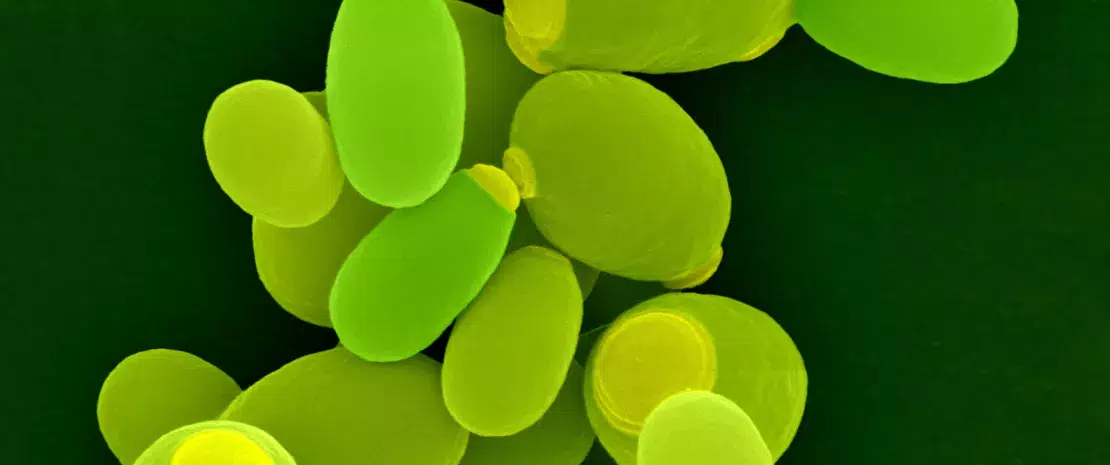Association between fungal dysbiosis and environment
The fungal portion of the gut microbiota (or mycobiota) has been much less studied than the bacterial portion but could also be involved, since a fungal dysbiosis was also observed in patients with IBD. Possible interactions between bacteria and fungi have been mentioned.
Sources
This article is based on scientific information
Sections

About this article
It appears that the bacterial and viral components of the microbiota are not the only ones to be affected in patients with IBD. The mycobiota, i.e. all fungi present in the gut ecosystem, also seems to be disrupted.
Disrupted microbiota
A study conducted in 235 patients with IBD and 38 healthy controls brought to light the presence of a fungal dysbiosis in affected patients: increase of the Basidiomycetes/Ascomycetes ratio, decrease in the proportion of Saccharomyces cerevisiae, and increase in that of Candida albicans.9 In patients with CD, it is believed that the development of fungi occurs to the detriment of bacteria, triggering a loss of diversity. Moreover, interactions between these two kingdoms (bacteria and fungi) also seem to be degraded compared to those observed in healthy subjects, thus revealing inter-kingdom alterations specific to IBD. Although data on the fungal portion of the microbiota are still very fragmented, these initial results suggest that the mycobiota plays a role in the pathogenesis of IBD. This dysbiosis, characterized by alterations in biodiversity and composition, adds itself to the bacterial dysbiosis.
Urbanization as a cause of this dysbiosis?
Meanwhile, some research teams focused on the link observed between rapid urbanization and increased incidence of autoimmune diseases, including IBD.7 Several hypotheses were suggested, including one involving the mycobiota: the Western diet, rich in carbohydrates, which promotes the development of Candida in the intestines; the impact of atmospheric pollution in urban areas which could reduce fungal biodiversity; and quality of urban air, less rich in some spores (Actinomyces, Botrytis…) than rural air. It seems that urbanization does not only impact the mycobiota but could also be related to the dysbiosis of other microorganism communities (bacteria, viruses, parasites...).
ROLE OF ENTERIC HELMINTHS
- Helminths are parasitic worms. They include nematodes (roundworms) and platyhelminths (flatworms).
- The absence of helminths has been associated to the development of IBD, while their presence seems to prevent the development of IBD.
- They probably play an immunoregulatory role within the gut microbiota (development of anti-inflammatory mechanisms, increase of mucus and fluid secretion in the intestinal lumen...)
- Ingesting Trichuris suis eggs could have a protective effect against IBD.7,10








